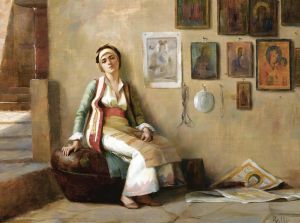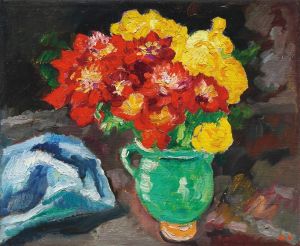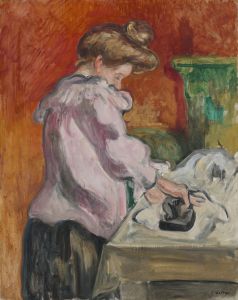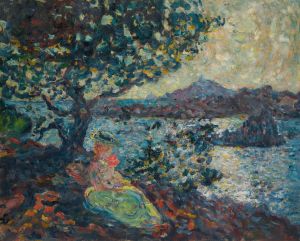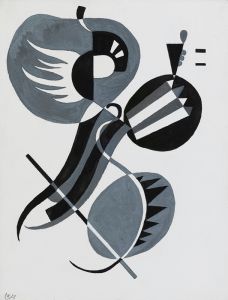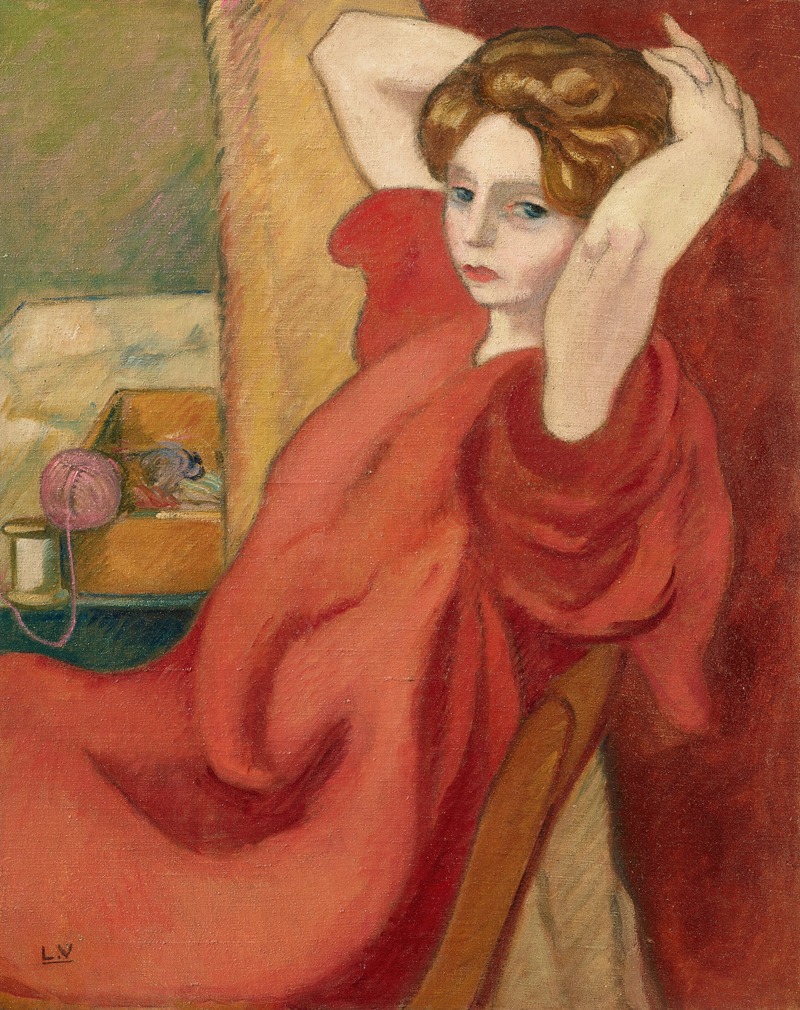
Portrait de Mme Valtat les mains derrière la tête
A hand-painted replica of Louis Valtat’s masterpiece Portrait de Mme Valtat les mains derrière la tête, meticulously crafted by professional artists to capture the true essence of the original. Each piece is created with museum-quality canvas and rare mineral pigments, carefully painted by experienced artists with delicate brushstrokes and rich, layered colors to perfectly recreate the texture of the original artwork. Unlike machine-printed reproductions, this hand-painted version brings the painting to life, infused with the artist’s emotions and skill in every stroke. Whether for personal collection or home decoration, it instantly elevates the artistic atmosphere of any space.
Louis Valtat (1869-1952) was a French painter and printmaker associated with the Fauvist movement. He is known for his vibrant use of color and his contributions to the development of modern art in the late 19th and early 20th centuries. One of his notable works is "Portrait de Mme Valtat les mains derrière la tête" (Portrait of Mrs. Valtat with Hands Behind Her Head).
"Portrait de Mme Valtat les mains derrière la tête" is a striking example of Valtat's portraiture, showcasing his distinctive style and mastery of color. The painting depicts Valtat's wife, Suzanne Valtat, in a relaxed pose with her hands placed behind her head. This composition emphasizes a sense of ease and intimacy, capturing a personal moment in the life of the artist and his muse.
Valtat's use of color in this portrait is particularly noteworthy. He employs a vivid palette, with bold and contrasting hues that bring the subject to life. The background is often rendered in complementary colors that enhance the figure's presence and create a dynamic visual effect. This approach is characteristic of the Fauvist movement, which prioritized strong colors and painterly qualities over realistic representation.
The brushwork in "Portrait de Mme Valtat les mains derrière la tête" is expressive and fluid, contributing to the overall sense of spontaneity and movement. Valtat's technique involves applying paint in thick, textured strokes, which adds depth and dimension to the portrait. This method also reflects the influence of Impressionism, which Valtat encountered during his early career.
Louis Valtat was born in Dieppe, France, and studied at the École des Beaux-Arts in Paris. He was contemporaries with several prominent artists, including Pierre-Auguste Renoir and Paul Signac, and was influenced by their work. Valtat's early paintings were more subdued in color, but he gradually adopted a brighter and more expressive palette, aligning himself with the Fauvist movement.
The Fauves, or "wild beasts," were a group of early 20th-century modern artists whose works emphasized painterly qualities and strong color over representational accuracy. Valtat's association with this movement is evident in his bold use of color and his departure from traditional techniques. However, unlike some of his Fauvist peers, Valtat maintained a more subdued and harmonious approach to color, which is evident in his portraits.
"Portrait de Mme Valtat les mains derrière la tête" exemplifies Valtat's ability to blend the influences of Impressionism and Fauvism while maintaining his unique artistic voice. The painting not only captures the likeness of his wife but also conveys a sense of her personality and the intimate bond between the artist and his subject.
Valtat's work, including this portrait, has been exhibited in various galleries and museums, contributing to his recognition as an important figure in the history of modern art. His paintings are appreciated for their vibrant color schemes, expressive brushwork, and the ability to convey emotion and atmosphere.
In summary, "Portrait de Mme Valtat les mains derrière la tête" by Louis Valtat is a significant work that highlights the artist's mastery of color and composition. It reflects the influence of both Impressionism and Fauvism, while also showcasing Valtat's unique style and personal connection to his subject.









